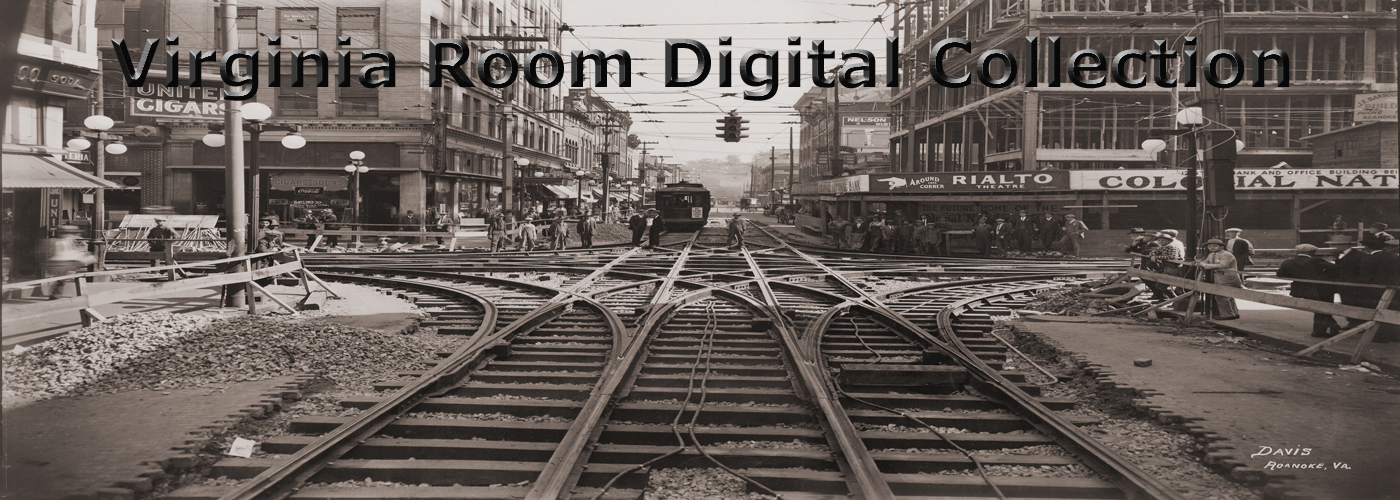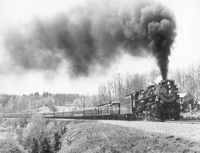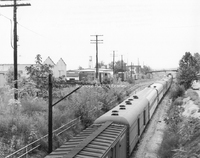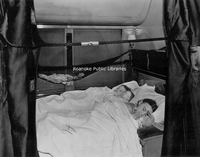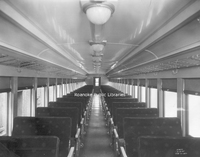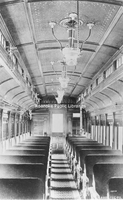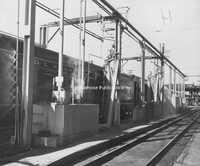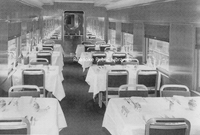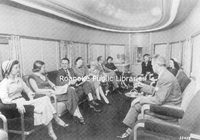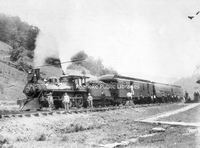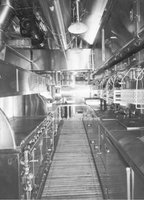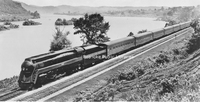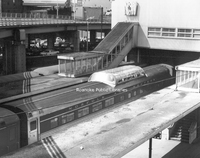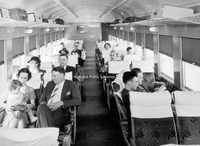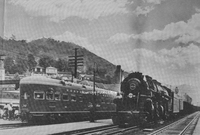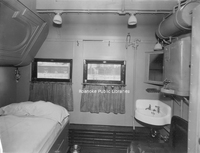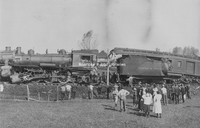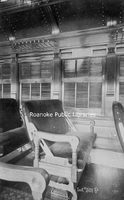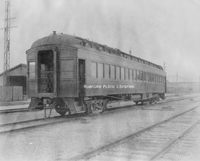Browse Items (21 total)
- Tags: passenger coaches
Sort by:
HNWR194
Norfolk & Western's passenger service ceased in 1971. Here is the Pocahontas on her last run, traveling eastbound at Blue Ridge, Virginia. An estimated 100,000 spectators lined the route to catch a glimpse of a passing era.
HNWR192
The Birmingham Special moves northbound, having detoured through Waynesboro, Virginia, on account of a washout on the Southern Railway's main line between Monroe, West Virginia and Charlottesville, Virginia. The Special was among a number of other…
HNWR187
An interior view of a Pullman car after being made into a sleeper.
HNWR183
The Class J 600 is pulling a Southern Railway streamlined passenger train. The Class Js were built between 1941 and 1950.
HNWR182
This passenger train stops in Ivanhoe, Virginia. Passenger service would serve as a popular form of distance travel until the emergence of the automobile.
HNWR180
Passenger coaches changed significantly over time. Once elaborate and finely appointed coaches evolved into more basic design, as seen in passenger coach No. 1650.
HNWR179
An interior view of a N&W passenger coach. Notice the oil lamps. Although beautiful design features, these lamps would often shatter during an accident, spilling their fuel into the car. Resultant fires sometimes killed more passengers than the…
HNWR161
To keep passenger coaches looking good, the railroad regularly sent them through a mechanical washing facility.
HNWR159
Interior view of a typical N&W dining car.
HNWR158
Interior view of a typical N&W lounge car.
HNWR150
Class Q Engine No. 516 pulls into a depot at Nolan, West Virginia. The engine was originally put into service in April 1882. Crew members are servicing both passenger and express cars.
HNWR141
When passenger services encompassed long distances, dining service was offered. While cooks had to operate in a relatively confined space, they prepared full-course meals as good as any fine restaurants.
HNWR136
The Powhatan Arrow on one of its runs. The Arrow traveled along a diverse scenic route through Virginia's Dismal Swamp, the Blue Ridge Mountains, the Alleghanies, and into the West Virginia coal fields.
HNWR126
Taken from the Roanoke passenger station, this photograph shows the Birmingham Special in the background and the Pocahontas in the foreground..
HNWR119
Passengers enjoy a ride on a N&W coach.
HNWR114
This image symbolizes the commercial ventures of N&W - a coal train enters the picture as a passenger train, the Powhatan Arrow, leaves. Engine No. 1213 is westbound out of Williamson, West Virginia, to deliver coal to the Great Lakes region. The…
HNWR113
An interior view of a sleeper car.
HNWR101
Engines No. 14 and No. 37 collided at Rural Retreat. Note the collapsed front half of the first baggage coach. While engines could often withstand collisions, the wood-constructed baggage and passenger coaches were extremely vulnerable.
HNWR096
Called a "vestibule car", this interior shot shows passenger seating in an 1892 coach. Notice the window shutters, ornate interior design, and fold-down seats. Despite its comfortable feel, early trains of this era were unsafe and not that pleasant…
HNWR080
Passenger coaches went through numerous stages of development. From wood to steel construction, and from basic amenities to luxurious accomodations, the coach was designed for both comfort and safety. This is an early passenger coach used by N&W.

